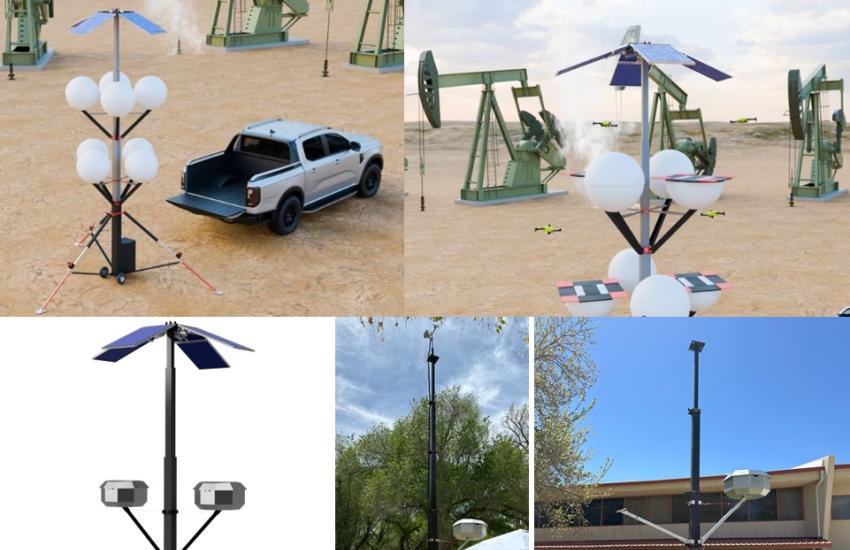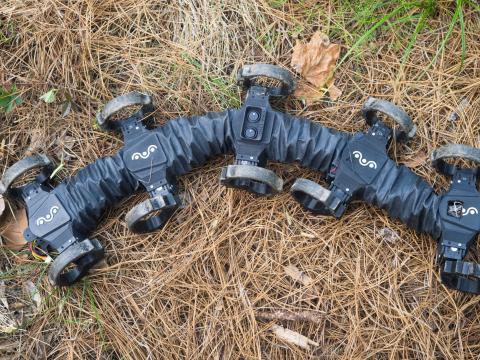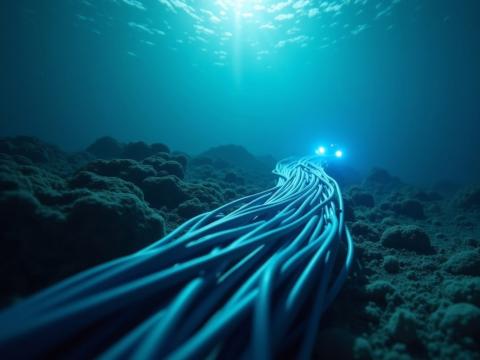Nature Inspires New Drone Technologies

Researchers at the New Mexico Institute of Mining and Technology are developing an array of nature-mimicking drones that could ultimately be used for a range of missions, including border surveillance, planet exploration and climate monitoring.
Last year, the National Science Foundation (NSF) awarded the institute a grant to create a “swarm of tiny, lightweight sensors” inspired by dandelion seeds. The sensors can be deployed in hard-to-reach areas by unmanned aerial vehicles, according to an NSF grant abstract. “These sensors will harness wind currents to spread across vast and difficult terrains, collecting crucial data on environmental conditions. This technology promises to improve our understanding of ecosystems and aid in disaster management by providing real-time, detailed information in places that are otherwise inaccessible,” the NSF adds.
The project focuses on developing a biomimetic swarm sensing system that emulates the dispersal method of dandelion seeds. The system includes sensors similar to sections of dandelion seeds, such as the pappus, which aids flight and energy harvesting, and the achene, for sensing and communication.
Key research goals include designing and optimizing the sensor structures for aerodynamic efficiency, developing robust energy harvesting and communication circuits and creating a transformer-based deep reinforcement learning architecture for autonomous unmanned aerial vehicle-assisted sensor deployment, the abstract states. It adds that the research integrates aerodynamic analysis, solid mechanics, microelectronics, signal processing, communication theory and deep reinforcement learning, aiming to advance both basic science and the practical application of biomimetic swarm-based remote sensing technology.
The drones are considered “passive” with no human control and will weigh less than a gram, reported Mostafa Hassanalian, associate professor, mechanical engineering, New Mexico Institute of Mining and Technology. “The tiniest ones we have created are 0.3 grams.
The unique shape of dandelion seeds creates a pressure difference, a vortex ring, around the seeds when they are exposed to the wind. That allows them to fly extraordinarily long distances, up to 100 miles. “There is more pressure underneath than the upper side of the dandelion seeds, and that creates a vortex. The air from the upper pressure moves toward the lower pressure, and that creates the shape of vortex, which we call a vortex ring, and this would allow them to stay in the air,” Hassanalian explained.
The researcher theorized that being white in color might also assist in the flight of the dandelion seeds. He noted that other flying seeds, such as cotton seeds, also are white and the color may have evolved that way for greater flight. “Once they are white, the flow around them is cooler, and once the flow is cooler, it means that there is more air density around them. The denser air would help them … because they will tolerate more drag, and at the same time, they can basically be taken for longer distances.”
The micro-drones can carry an array of tiny, commercially available sensors, such as humidity, temperature, light and gas sensors, as well as communication sensors. They also operate without batteries, using two alternative power sources. The first is flat, flexible—and obviously teeny—solar cells attached to a filament, Hassanalian explained while showing images of the system during a Zoom interview. “Once this is deployed, it will be able to basically provide electricity to the dandelion seeds.”
The second involves a piezoelectric transducer made of a flexible polymer material that vibrates when exposed to air and generates electricity through that vibrating motion. “Now we are trying to integrate this piezo material embedded to this structure, where, basically, through this vibration and deformation, they will generate electricity for the microelectronics that we have,” Hassanalian said.
The researchers also continue to work on the actual shape of the drones. “Shape of the dandelion seeds is very important. In the current work that we are doing, we have actually explored multiple two-dimensional and three-dimensional configurations, so we can do some experimental studies with the particle imagery velocimetry, which is PIV machines. We generate a foggy environment, we drop them, and with a laser and a high-speed camera, we are able to visualize the flow characteristics around them.”
The research team envisions the micro-drones being airdropped via larger drones. Those larger drones could remain in the air, forming a communications network and collecting data from the seeds. The larger drones also might launch from portable vertical airports or “vertiports,” which the researchers are developing under another NSF grant.
The vertiports are inspired by trees and bird nests, which can be waterproof and can manage heat, Hassanalian offered. They can protect the drones from the rain and snow, and the drones can land, share their data and recharge. “We actually are finalizing our first prototype that [has] solar panels. At the top, there’s a weather station, and this vertiport has eight nests, or a station that can support the swarm of the drone.”
He suggested a scenario in which eight vertiports are deployed near the U.S. southern border. The drones from each one would fly to the next vertiport, share data and move on, helping secure the border and potentially preventing deaths as immigrants seek to cross over from Mexico.

Additionally, drones and vertiports likely will be integral to smart cities of the future for such missions as delivering packages, responding to emergencies such as fires or even medical emergencies like heart attacks, or monitoring pollution. Hassanalian said there are at least 200 civil applications for drones in smart cities.
Another possible mission for vertiports and drones would be exploring caverns on Mars known as lava tubes. Hassanalian, along with fellow researchers Jared Cannon, Adrian Salustri, Alex Heusser, Mohammad Moin Khan and Sihua Shao, published a paper in January 2024 at the American Institute of Aeronautics and Astronautics SciTech Forum explaining the advantages that micro-drones could have over ground robots, which can be damaged trying to traverse the tough terrain on Mars.
“So far NASA has sent orbiters, rovers, landers and even a helicopter on the surface of Mars. However, all of these missions were meant to explore only above the surface or drill a few inches into the ground. This has allowed for an abundance of data for above surface Martian conditions, however for beneath the surface, conditions remain unknown and unexplored. The harsh conditions on the red planet create a few constraints for what the robotic explorers can or can’t do,” the researchers wrote. “For instance, the surface of Mars damaged Curiosity’s wheels and tore holes in the wheel structure. Dust storms capable of covering the whole planet are also common on Mars which can severely limit the visibility needed to move rovers or block out the Sun’s radiation needed for solar powered explorers.”
Extreme radiation is also a challenge, Hassanalian noted. NASA and international space agencies have been interested in Mars exploration, and those explorers could end up living in lava tubes. Hassanalian said that NASA has identified thousands of lava tube entrances but has not yet been able to explore inside the caverns because the rovers have been too big.
A larger drone or ground robot could deploy a swarm of the dandelion seeds. “One of the potential applications of the dandelion seeds is that they can be deployed inside of these lava tubes. Since [the caverns] have open entrances, there is a possibility of the wind going inside of this lava tube. You will be able to measure the depths, the widths, the temperature, humidity, so, all these environmental characteristics of these lava tubes.”
One of the potential applications of the dandelion seeds is that they can be deployed inside of these lava tubes.





Comments